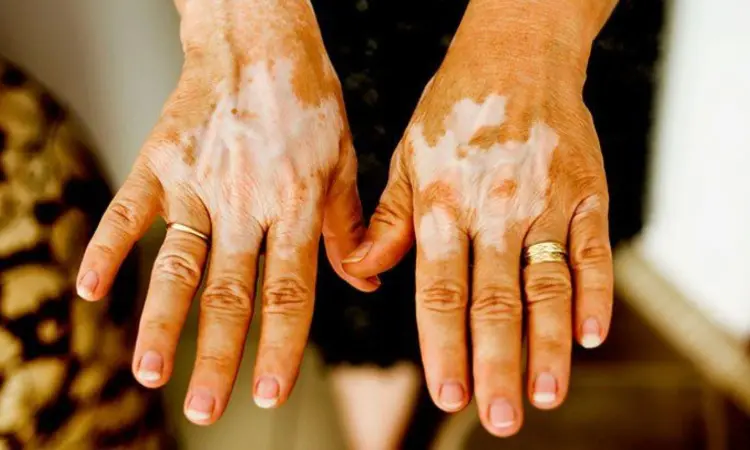- Home
- Medical news & Guidelines
- Anesthesiology
- Cardiology and CTVS
- Critical Care
- Dentistry
- Dermatology
- Diabetes and Endocrinology
- ENT
- Gastroenterology
- Medicine
- Nephrology
- Neurology
- Obstretics-Gynaecology
- Oncology
- Ophthalmology
- Orthopaedics
- Pediatrics-Neonatology
- Psychiatry
- Pulmonology
- Radiology
- Surgery
- Urology
- Laboratory Medicine
- Diet
- Nursing
- Paramedical
- Physiotherapy
- Health news
- Fact Check
- Bone Health Fact Check
- Brain Health Fact Check
- Cancer Related Fact Check
- Child Care Fact Check
- Dental and oral health fact check
- Diabetes and metabolic health fact check
- Diet and Nutrition Fact Check
- Eye and ENT Care Fact Check
- Fitness fact check
- Gut health fact check
- Heart health fact check
- Kidney health fact check
- Medical education fact check
- Men's health fact check
- Respiratory fact check
- Skin and hair care fact check
- Vaccine and Immunization fact check
- Women's health fact check
- AYUSH
- State News
- Andaman and Nicobar Islands
- Andhra Pradesh
- Arunachal Pradesh
- Assam
- Bihar
- Chandigarh
- Chattisgarh
- Dadra and Nagar Haveli
- Daman and Diu
- Delhi
- Goa
- Gujarat
- Haryana
- Himachal Pradesh
- Jammu & Kashmir
- Jharkhand
- Karnataka
- Kerala
- Ladakh
- Lakshadweep
- Madhya Pradesh
- Maharashtra
- Manipur
- Meghalaya
- Mizoram
- Nagaland
- Odisha
- Puducherry
- Punjab
- Rajasthan
- Sikkim
- Tamil Nadu
- Telangana
- Tripura
- Uttar Pradesh
- Uttrakhand
- West Bengal
- Medical Education
- Industry
Early diagnosis of 'chemical' or chemically aggravated vitiligo improves prognosis

A new study by Nada Kotti and team showed that a major contributing component to the vitiligo incidence is chemical variables. The findings of this study were published in the Libyan Journal of Medicine.
Around 0.1–2% of people worldwide have vitiligo. It happens when the melanocytes in the interfollicular epidermis and, on occasion, the hair follicles are continuously and selectively destroyed. There are several etiological ideas that have been put up for the incidence of vitiligo, a multifactorial dermatosis. Few epidemiological studies have been done on the causes that cause vitiligo, notably the role that chemical exposure plays in the development of the illness. Therefore, research into the connection between vitiligo and chemical exposures is necessary to comprehend this puzzling illness.
Patients with vitiligo who had their diagnosis confirmed by a dermatological expert were the subjects of a case-control study by researchers. The entire research period lasted six months, from July 1 to December 31, 2019. A minimum sample size of 46 cases and 92 controls was established. The control group was similar to the vitiligo group in terms of gender, age, and professional position.
The key finding of this study clearly indicates the use of colored toothpaste and household chemicals, a history of recurrent antibiotic use, and occupational exposure to phenol and catechol derivatives were all found to be substantially linked with vitiligo in the binary logistic regression model (three to fourfold increase).
The illness of vitiligo is obscure, complicated, and multifaceted. It is still unclear what function autoimmune, genetic, and environmental variables play. Our findings imply that chemical variables are crucial in the development of vitiligo. As a result, identifying chemical exposure in each patient being monitored for vitiligo is necessary for the prevention of this dermatosis. The prognosis for "chemical" or chemically exacerbated vitiligo is better the earlier the diagnosis is made.
Reference:
Rmadi, N., Kotti, N., Bahloul, E., Dhouib, F., Sellami, I., Sellami, K., Jmal Hammami, K., Masmoudi, M. L., Turki, H., & Hajjaji, M. (2022). Role of chemical exposure in the incidence of vitiligo: a case–control study in Tunisia. In Libyan Journal of Medicine (Vol. 18, Issue 1). Informa UK Limited. https://doi.org/10.1080/19932820.2022.2132628
Neuroscience Masters graduate
Jacinthlyn Sylvia, a Neuroscience Master's graduate from Chennai has worked extensively in deciphering the neurobiology of cognition and motor control in aging. She also has spread-out exposure to Neurosurgery from her Bachelor’s. She is currently involved in active Neuro-Oncology research. She is an upcoming neuroscientist with a fiery passion for writing. Her news cover at Medical Dialogues feature recent discoveries and updates from the healthcare and biomedical research fields. She can be reached at editorial@medicaldialogues.in
Dr Kamal Kant Kohli-MBBS, DTCD- a chest specialist with more than 30 years of practice and a flair for writing clinical articles, Dr Kamal Kant Kohli joined Medical Dialogues as a Chief Editor of Medical News. Besides writing articles, as an editor, he proofreads and verifies all the medical content published on Medical Dialogues including those coming from journals, studies,medical conferences,guidelines etc. Email: drkohli@medicaldialogues.in. Contact no. 011-43720751


